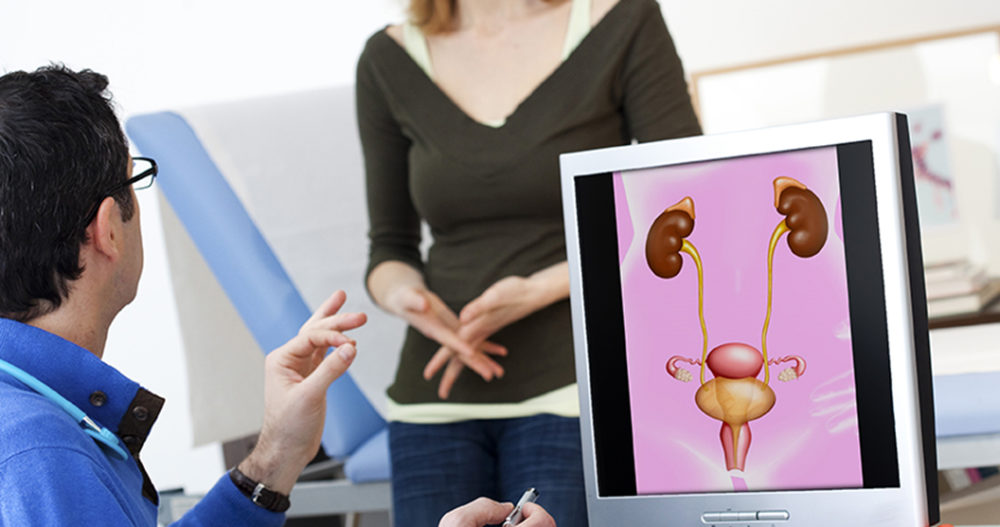Bladder Prolapse
What’s bladder prolapse?
A cystocele or a prolapsed bladder occurs when ligaments that hold your bladder up and the muscle between a woman’s vagina and bladder are weak; for this reason, the bladder will fall into the vagina.
There are three grades of cystocele:
– Grade 1: The bladder falls only a short way into the vagina.
– Grade 2: The bladder falls to the opening of the vagina.
– Grade 3: The bladder comes out of the opening of the vagina; it’s a severe grade.
Causes and Risk factors
There are several causes and risk factors:
– Pregnancy and childbirth: Women who have had a vaginal delivery, multiple pregnancies, or whose infants had a high birth weight have a higher risk of anterior prolapse; because the pregnancy and the delivery may involve straining the muscles of the floor of the pelvis.
– Age: especially after menopause, when the production of estrogen decreases; so the muscles around the vagina are not strong anymore.
– Hysterectomy.
– Family history or genetic factor (some women are born with weak connective tissues).
– Obesity: Women who are obese are at higher risk of anterior prolapse.
– Constipation.
– Chronic coughing.
– Lifting heavy objects.
– Smoking.
What are the symptoms of a cystocele?
– Seeing something bloating through the vaginal opening.
– Difficulty to urinate.
– Feeling the need to urinate frequently.
– Frequent urinary tract infections.
– Pain in the pelvic area or lower back.
– Painful sex.
– Difficulty to insert tampons or applicators.
How is bladder prolapse diagnosed?
Prolapsed Bladder can be diagnosed with a clinical history and a pelvic exam. The exam may be done while you are lying down, straining or pushing, or standing; the doctor may measure the severity of the prolapsed bladder by seeing in which part of the vagina the bladder has fallen.
Other tests and imaging studies may also be done to check the pelvic floor, and confirm the diagnosis of a prolapsed bladder:
– Cystoscopy: a long tube is passed through the urethra to examine the bladder.
– Urodynamics: to measure the capacity of the bladder to hold and release urine.
– X-rays
– Ultrasound
– MRI
How to treat the prolapsed bladder?
1- No treatment if the prolapse is:
– Not causing you problems.
– Not blocking your urine flow.
2- Behavior therapy
– Kegel exercises (which help the muscles of the pelvic floor to be strong).
– Pelvic floor physical therapy.
– Pessary: a vaginal support device to hold the bladder in place.
3- Estrogen replacement therapy
4- Weight loss
5- Surgery:
A moderate or severe prolapsed bladder may require reconstructive surgery to move the bladder into a normal position; and it can be performed through the vagina or the abdomen, under a spinal or general anesthetic.
The surgical treatment is the best therapy for bladder prolapse; but if a woman is planning for a pregnancy, surgery is contraindicated.
The patient usually goes home the day of the surgery, and the recovery time typically takes four to six weeks.
Follow the link for more information about bladder prolapse treatment.
How can a cystocele be prevented?
– Maintain a healthy weight.
– Avoid lifting heavy objects.
– Treat constipation.
– Stop smoking.



